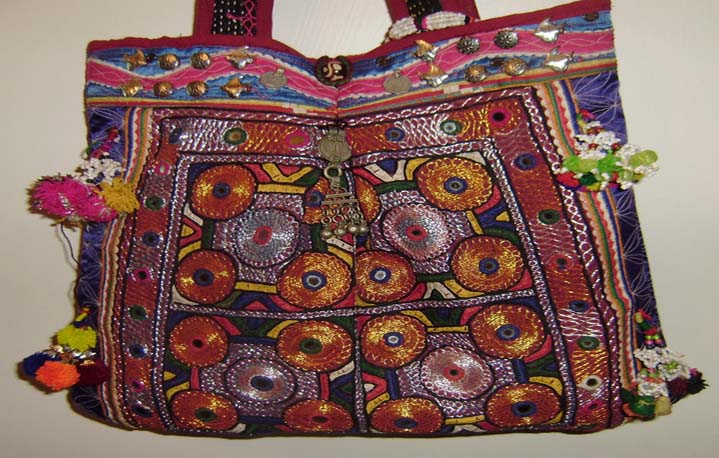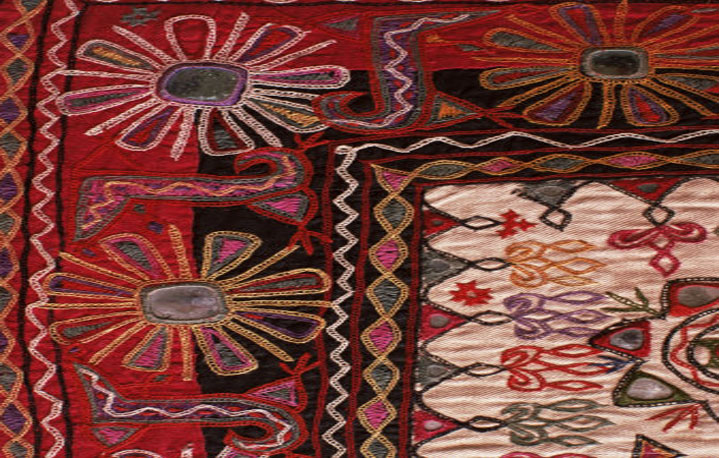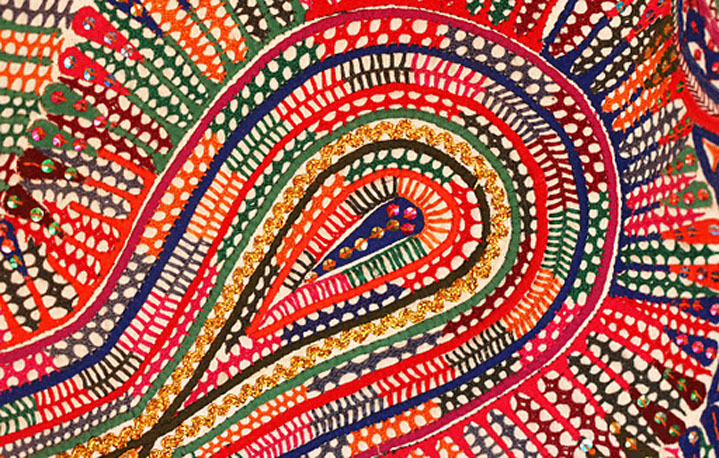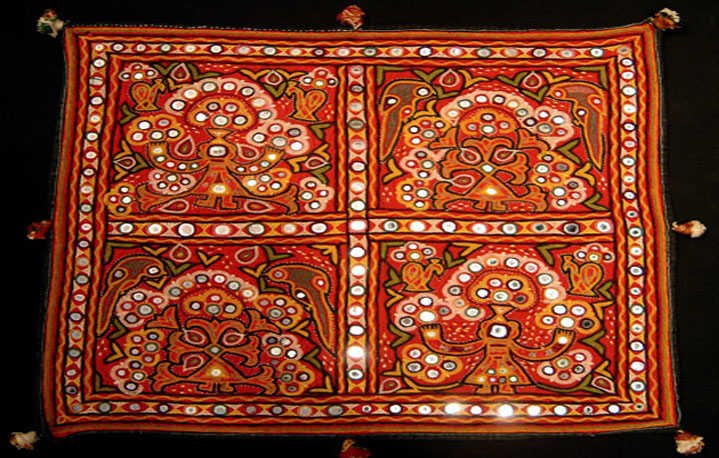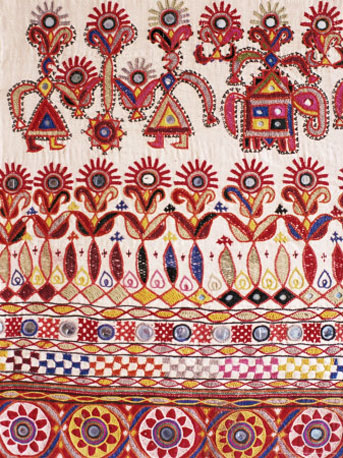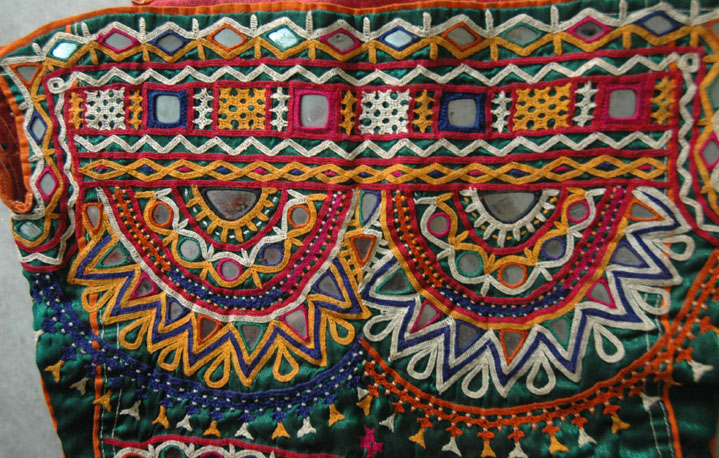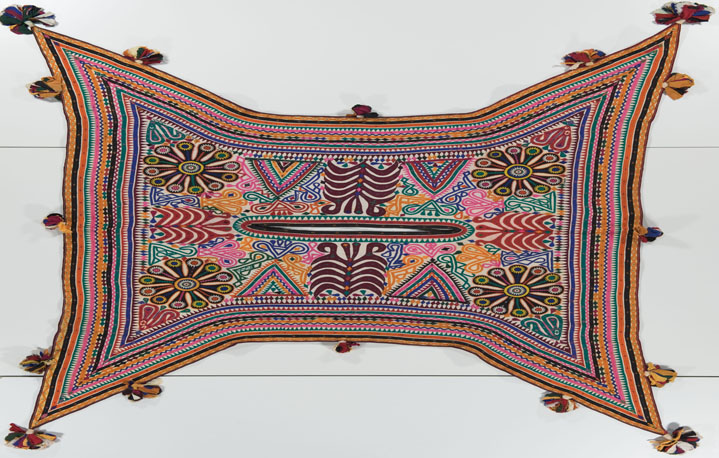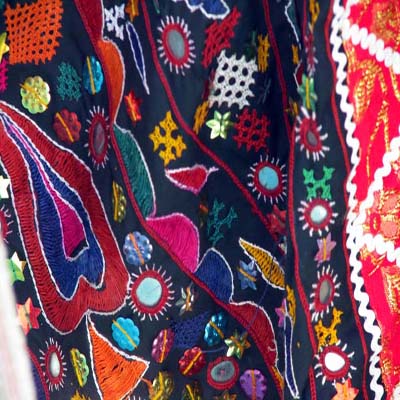The Rabari Embroidery depicts the creativity of women belonging to the Rabari community in their daily life and lifestyle. The Rabaris are a wandering community known for their extraordinary capacity for survival and adaptation in the arid regions of Gujarat and Rajasthan. They are recognized for their distinctive arts; especially embroidery, beadwork and mirrored mud sculpture. They also traditionally spin the wool from their sheep and give it to local weavers to make the woolen skirts, veils, blankets and turbans Rabaris use.

Rabaris embroider a wide range of garments, bags, household decorations and animal trappings. Important events and rites and values in their lives are highlighted in the embroidery. Unmarried girls traditionally embroider blouses, skirts, veils, wall hangings, pillows, purses and Kothalo which are dowry sacks, as their contribution for their dowryes.
Married women embroider children's clothing and cradle cloth as well. These embroideries not only reflect the primacy of children, the mirrors which are embellished also protect their children from evil spirits that inhabit their world. Some embroidery emphasise particular customs. Elaborately embroidered kothaliya -- purses in which the groom carries ceremonial gifts of pan and supari, symbolise the importance of exchange in maintaining familial ties. Embroidery on lugdi veils underscores the importance of laj the conventional modesty that Rabaris observe. Other embroideries on display preserve the Rabari memory of their origins as desert dwelling camel herders.
Rabaris embroider camel trappings to honour the camels they still keep for ceremonial use. Rabari grooms wear elaborately embroidered long jackets andchorani pants, and brides wear Ghaghara or skirts.
This embroidery is like a language with which women express themselves. Specific motifs and their composition have a name and meaning. Many of these symbols represent elements intrinsic to Rabari everyday life and throws light upon how the community sees their world.
